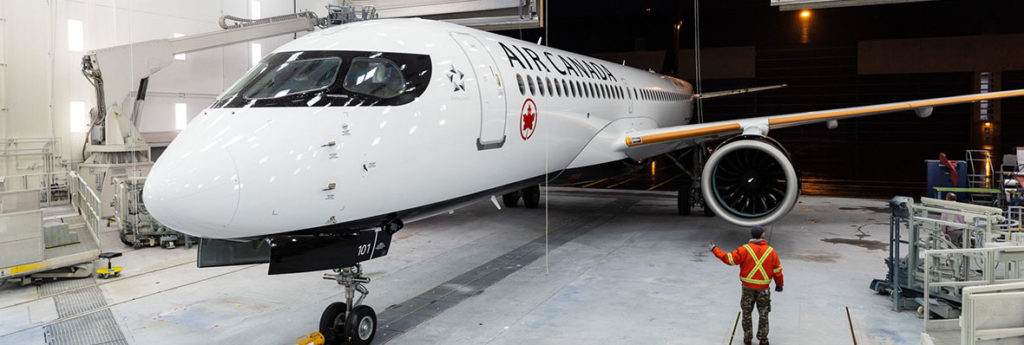Air Canada has unveiled its first Airbus A220 jetliner, one of an eventual 45 it aims to let loose on the North American market. The narrow-body aircraft, whose maiden voyage takes off for Calgary from Montreal today, gives Canada’s largest airline greater range and cost savings as the company tries to shore up profit margins amid the ongoing grounding of the Boeing 737 Max.
The 137-seat A220 offers 20 percent more fuel efficiency than some Boeing 737 and Airbus jets, and will begin to replace planes like the Embraer E190 with 97 seats, said Craig Landry, Air Canada’s head of operations.
Chief executive Calin Rovinescu says the order, with a list price of US$3.8 billion, makes Air Canada the second North American carrier to fly the A220, after Atlanta-based Delta Air Lines Inc.
The plane was called the C Series before Bombardier Inc. gave up a controlling stake in the aircraft program in 2018 to Europe-based Airbus SE, which christened it the A220.
The airliners will be built at what are now Airbus Canada’s facilities north of Montreal in Mirabel, Que., churning out 10 A220s per month at full production. Airbus also produces the planes at a new site in Mobile, Alabama, mainly for US customers.
Air Canada’s next two A220 deliveries are slated to run routes starting in May between Montreal and Seattle and between Toronto and San Jose, Calif., as it looks to build its presence in the US and Canada while pushing back against rival WestJet Airlines Ltd.’s inroads in international markets.
Air Canada was slated to have 36 Max 8s by the end of 2019 – one-quarter of its narrow-body fleet – with 14 more initially scheduled to arrive this year. The worldwide grounding of the Max last March following two deadly crashes within five months sent the company scrambling as it cancelled routes, made last-minute plane leases and absorbed higher fuel costs.
“In a sense, we already have contingency plans in place to try to cover that aircraft. This aircraft was really designed to take on new missions within Canada and between Canada and the US,” Landry said in an interview.
He brushed off concerns about potential production delays, a nagging problem when the aircraft was under Bombardier’s roof.
“Working with a Canadian partner (Airbus Canada) allows us to have a lot of proximity and a lot of communication,” he said.
The hefty order also spells consistent work for the 2,700 Airbus employees in Mirabel.
On top of the 45 new narrow-bodies, Air Canada hopes to fold some 40 more aircraft into its fleet this year if its takeover of Transat AT wraps up by the second quarter following regulatory green lights.

